(This article was first emailed on April 7th, 2021 to fans who had registered an interest in finding out more about our Tricorder.)
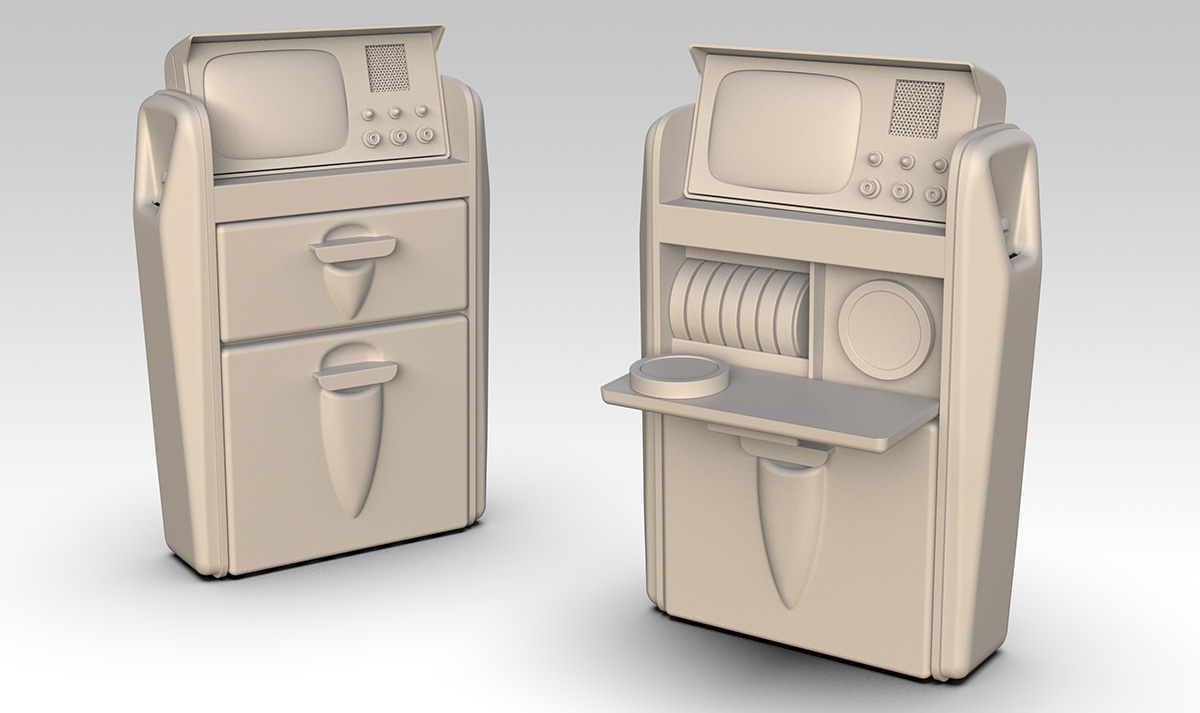
The high-resolution tricorder 3D scan data gives us an extraordinary opportunity to create a detailed and accurate replica that should, as for our other Star Trek replicas, look and feel as much as possible like a real piece of equipment that had been issued to an Enterprise officer, 55 years ago, 255 years in the future.
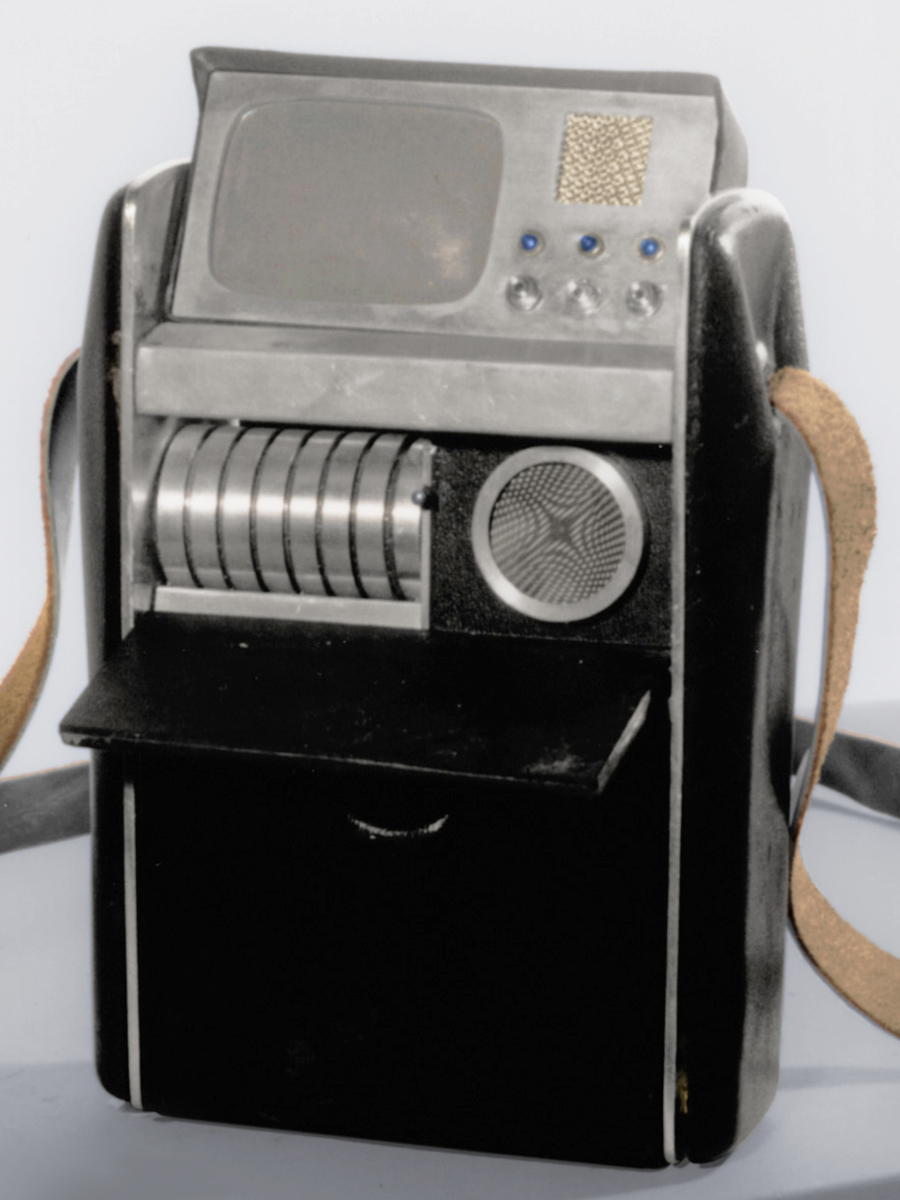
Wah Chang’s hero prop, 1966
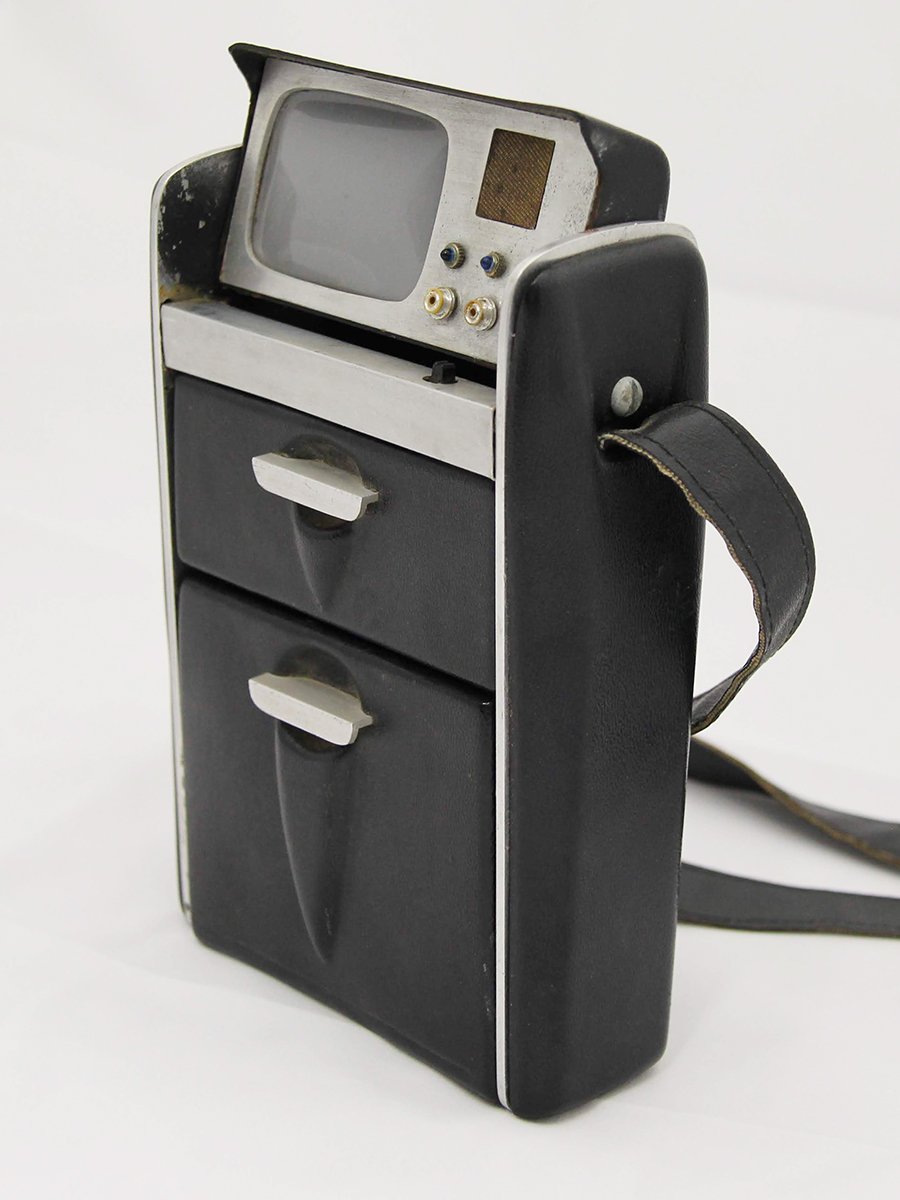
Greg Jein’s Wah A-B, 2021
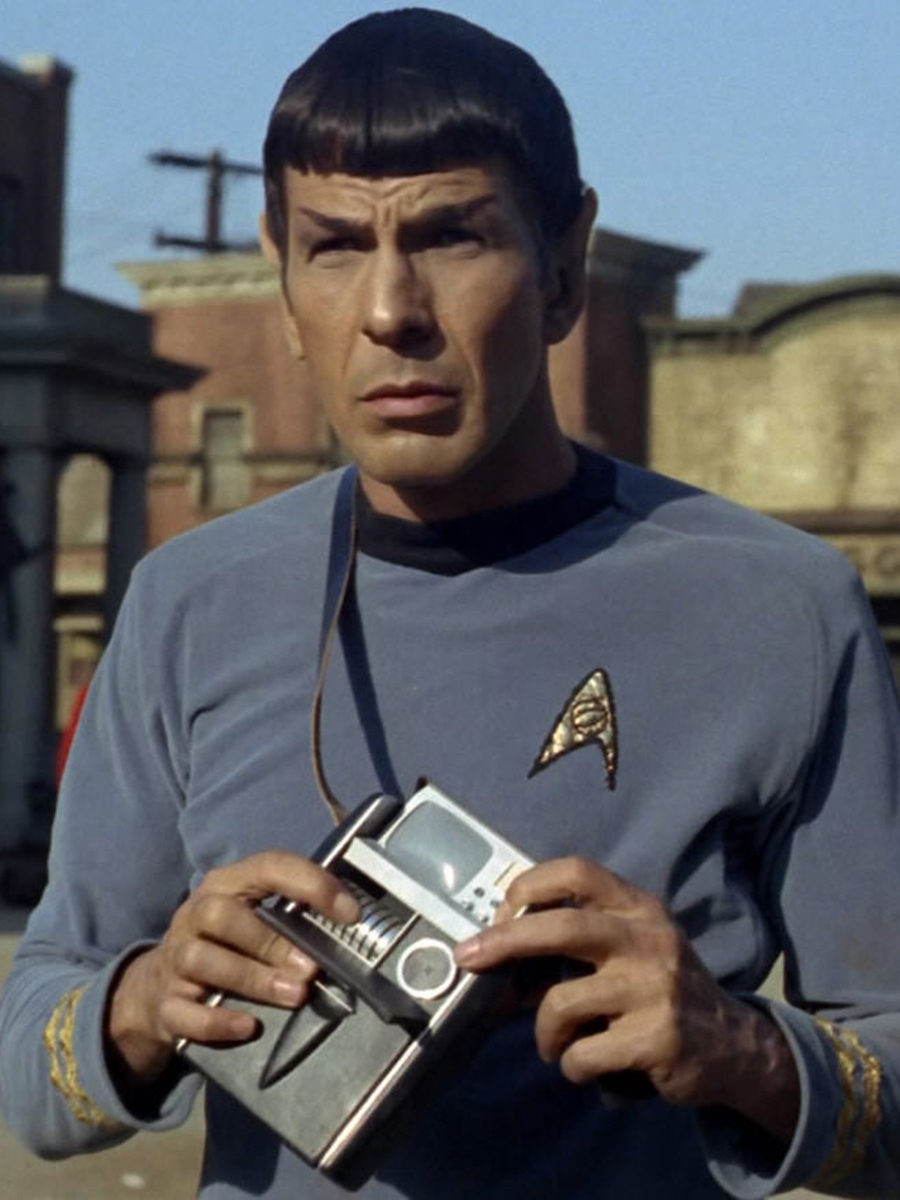
Mr. Spock’s Tricorder, 2265
However, it is not as simple as just using the generated scan data to make a production product, although it is an excellent jumping-off point for our design. For The Wand Company, the finished replica should not only follow the external dimensions and geometry of the original prop as closely as possible but also fulfil a number of other important criteria: it has to be manufacturable in volume, invisibly contain the components needed for it to be functional, be robust enough to be enjoyed as intended and used in one’s quarters and during away missions and, most importantly, create a rich experience for the owner which immerses them in the optimistic expanses of the Star Trek universe, enabling them to boldly go out and explore their planet with a realistic piece of Standard Issue Starfleet equipment.
Naturally, decisions have to be made about how the tricorder will fit together and how everything needed to make it function can be squeezed into the form that was determined by Wah Chang. We are lucky that the electronics industry has miniaturised and significantly reduced the cost of the components needed to make a working tricorder since the invention of the integrated circuit just before The Original Series first aired, when (prophetically) NASA’s Apollo Program was the largest single consumer of those exotic new silicon logic circuits. However, the space inside the tricorder hood (which in 1966 would realistically never have fitted a cathode-ray tube) is, even with a modern LCD, still a crowded place for the functions that we want to pack into it in 2021.
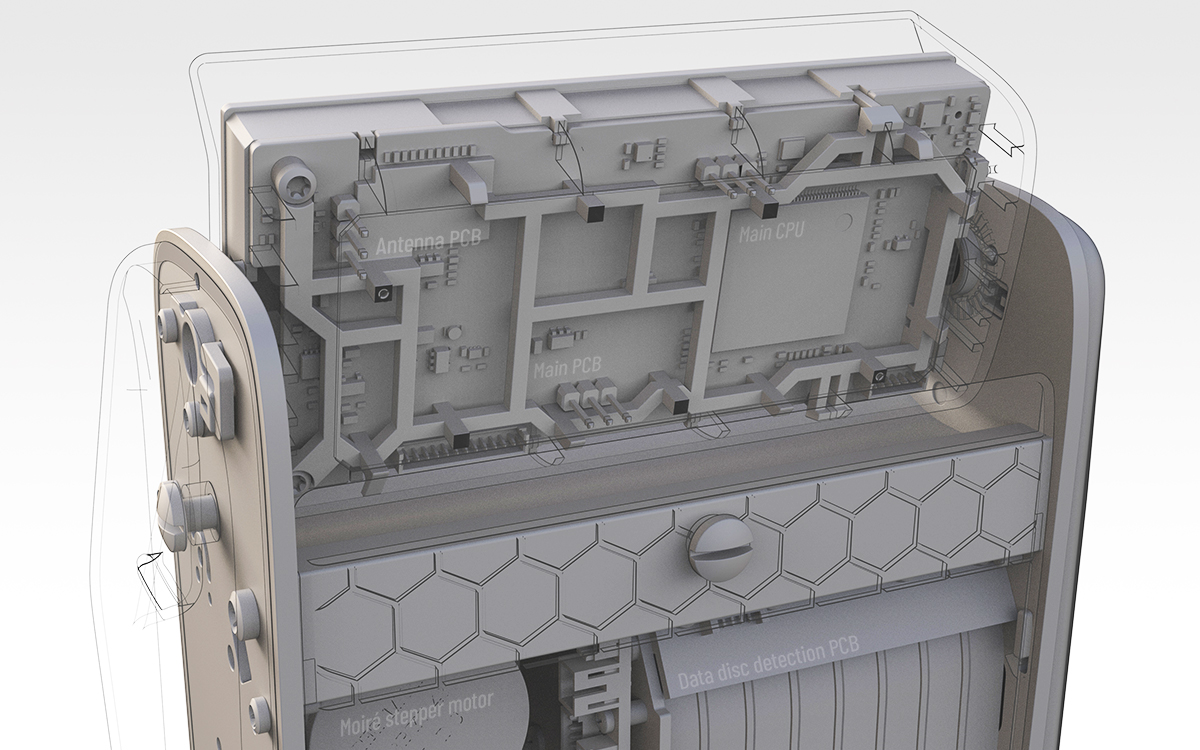
There’s a lot going on under the hood. (The cables that connect the hood with the rest of the electronics are not shown.)
But before we get to what it does, and exactly what we have crammed into the space we have, there are some critical early-stage decisions to be made that are needed to take us from the point cloud scan data of a hand-made prop to production-ready CAD.
Our Senior Designer, Andrew Stockdale, a lifelong Star Trek fan, had already started amassing reference and developing some outline CAD by the time he and Richard made their trip to Los Angeles to study the original prop. As already mentioned, the Wah A-B tricorder is in incredibly good condition for its age but, being handmade, it is not entirely symmetrical and elements that clearly are intended to be identical are not perfectly the same size.
The production geometry was created using SolidWorks modelled over the scan data. I asked Andrew what the main challenges that needed overcoming were, and what opportunities for innovation there were within such an obviously tight brief.
How was getting your ‘hands on’ the original hero prop essential for this product development?
When I was handling the original hero prop, I was able to study the appearance and feel of it but also really begin to understand Wah Chang’s original design intent. As I handled the prop I felt that I was truly connecting with the people that made it, seeing their craftsmanship and feeling their work. The skillfully hand-shaped aluminium panels were still held accurately square by the blocks. However, evidence suggests that this hero prop was disassembled and rebuilt after the first season so that additional lower-cost tricorder props could be made ready for the following season. Unfortunately, this process caused extensive damage and as a result, some of the prop’s panels were warped and loose. Being able to physically see the deformations and move the loose bits into position helped to create a more accurate picture of how the tricorder would have been in its former glory. It is critical that we are able to use this impression of the prop with the 3D scans to create an idealised version of the prop as it is now to match it more accurately to what was seen on the screen.
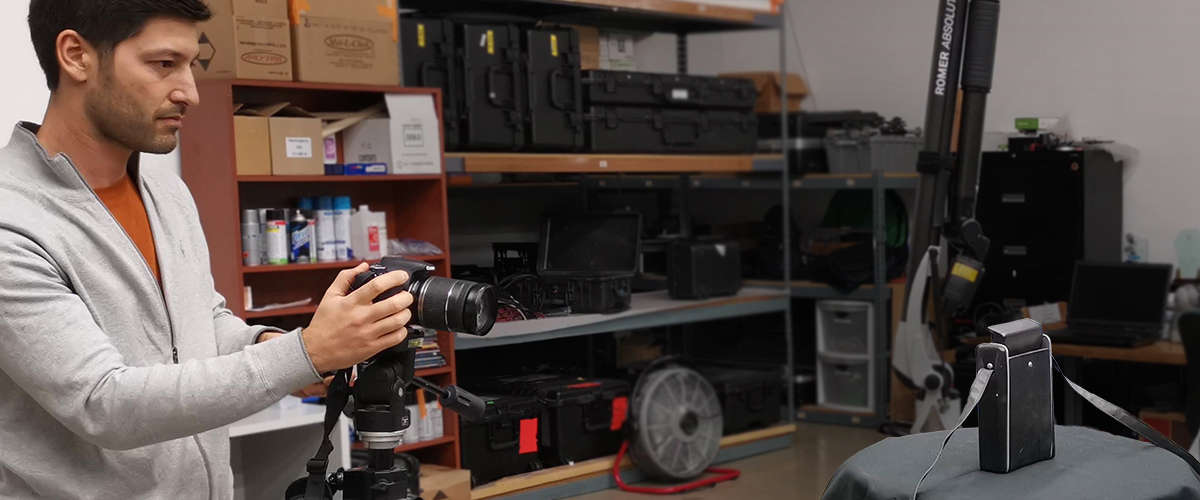
Andrew Stockdale takes a photo of the hero prop – connecting with the people that made it
Once you have imported the scan data, where do you start?
As some fans may know, we have been considering making the tricorder model for several years, in order to complete the away party set. As soon as I heard that the project might be happening, I started researching and gathering information, prior to the project getting the official greenlight. From this information, I was able to create a 3D ‘master sketch’, which is a basic skeleton geometry in CAD, ready for the scan data. The master sketch is described by a series of key dimensions which parametrically control the rest of the CAD model. This is a highly effective and precise method for adjusting the geometry. The dimensions I used to create the master sketch were based on original photographs and the extensive research I carried out prior to going to LA to scan Greg Jein’s original, which certainly helped me to know what I was looking for when I got hold of the prop itself. Once I had imported the scan data I could see that while some of the original measurements I had found by research were remarkably close, others were quite some way off, demonstrating how necessary the scan data was to develop a replica to be as accurate as possible to the original hero prop. One area which surprised me was how much shallower the actual prop hood was compared to the dimensions gleaned from my earlier research. I immediately thought this was a great discovery, then also realised that a shallower hood meant less volumetric space for our LCD and electronics!
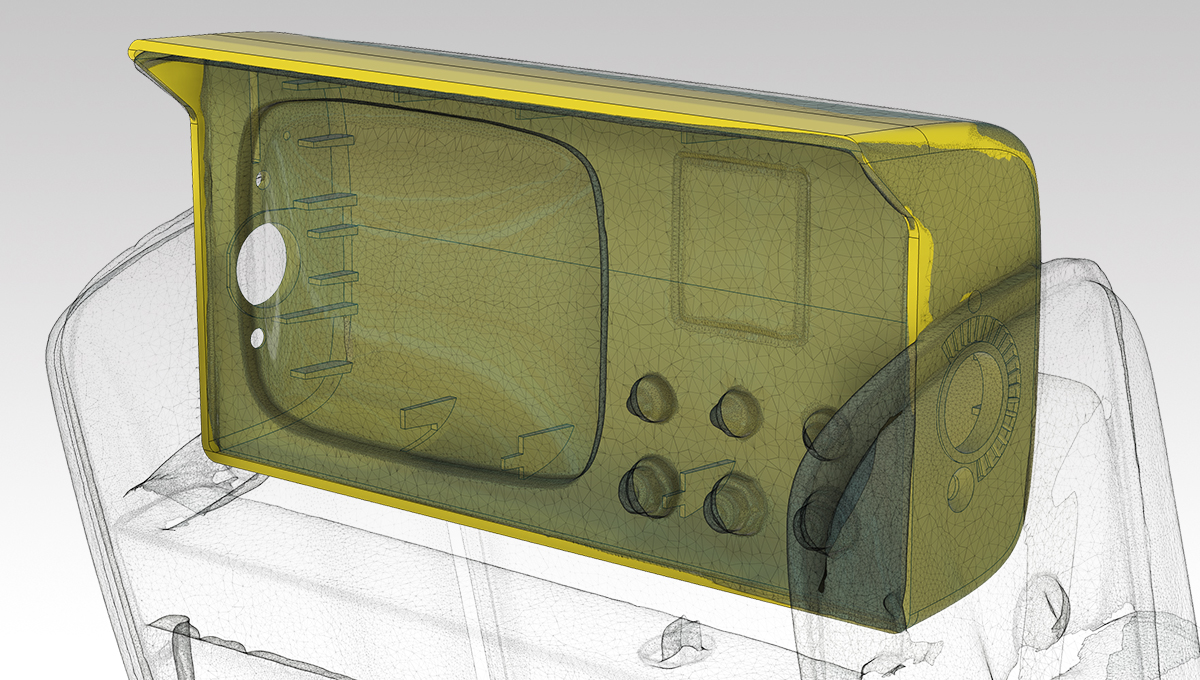
Production hood shell CAD over the Wah A-B scan data
How do you deal with elements that aren’t symmetrical or don’t match when they should?
When studying the prop it was clear that some of the panels had become warped and one side panel was completely loose from its original position. All this is captured by the scan and that data is all imported into the CAD – the good, bad and the ugly. However, because I had also physically examined the hero prop, I was able to ascertain which aspects of it were part of the original design intent and which areas had become damaged or misshapen during the hero prop’s history. With the scan geometry in CAD, I was able to make multiple sections through the data as well as overlaying what were intended to be symmetrical parts, for example the two side panels, so that I could then compare each part directly to find coherent features. Needless to say, there was quite a lot of this to work through which took a great deal of care and time to get to the model ready for production.
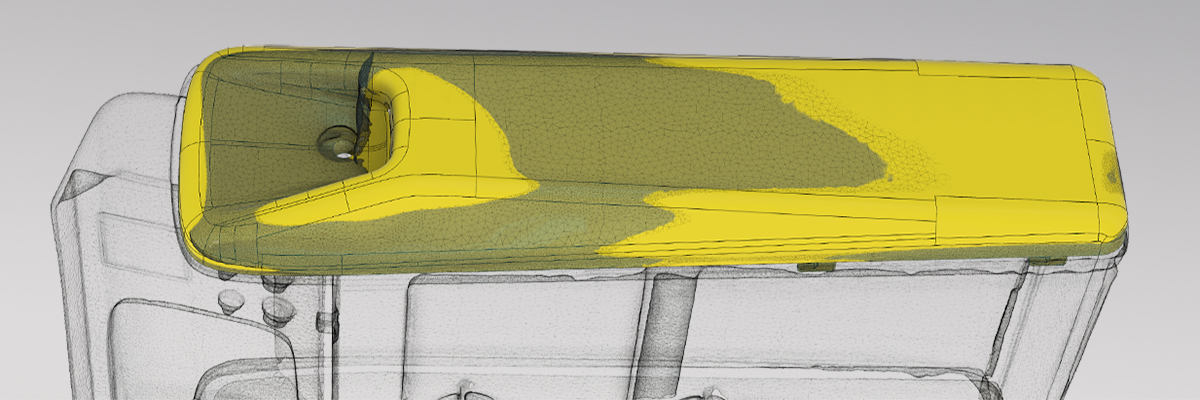
Production side panel CAD over Wah A-B scan data
What are the main differences of design approach between a prop and the replica?
Having previously made props and countless prototypes, I’d say there are three main differences that come to mind.
Firstly, it’s that the replica must be designed for manufacture. For example, the black panels on the original hero prop were made from Kydex sheets that were heated up and vac-formed over hand-crafted wooden bucks. I did briefly consider whether we could use anything from this approach, but not only is that actual Kydex pattern long discontinued, but thermoformed sheets are notoriously tricky to finish repeatably and do not allow for the additional fix and finish features and the overall quality build we require. Every single part has to be manufacturable in a sensible way. The geometry of each part has to be considered for injection molding, tolerance stacks, and finally the people who will be putting it together on the tricorder assembly line.

Inside rear cover: accuracy of fit and finish and a significant amount of unseen inner detail is required for our replica
Secondly, there’s the end user and the way they are going to use the tricorder. This is a big difference between how a prop is made and how the replica is manufactured. Props are designed to be used extremely carefully or in specific well-controlled situations. They often have fragile features that are easily broken and thus are expected only to last for a scene or two or be rebuilt multiple times; they seldom have to function in any normal sense of the word, and do not need to be finished in every area for close scrutiny, especially in the 1960s, decades before high definition, 8K recording. When I design a replica I know that I have to create something that will feel solid and give the owner something they could truly believe could really exist in the world that it was taken from.
Finally, this product takes the features that were imagined like the sensing, recording and display and makes them a reality, and these have to be attached to the structure and fit inside it, resulting in significant internal design complexity that prop makers do not have to worry about.
What were the most challenging parts of the design?
The most challenging part of the design was integrating all the real functions we wanted to include into the prop’s geometry. This is because our primary goal was to keep the geometry as true to the hero prop as possible, whilst realising the sort of functions that Wah Chang imagined. An example is the position and size of the display. The proportions of the hero prop display screen come from a previous age and do not match those of displays that are readily available today. Squeezing a functioning LCD in the predefined shape and space that Wah Chang determined for it, decades before the technology existed, was perhaps the most significant challenge.
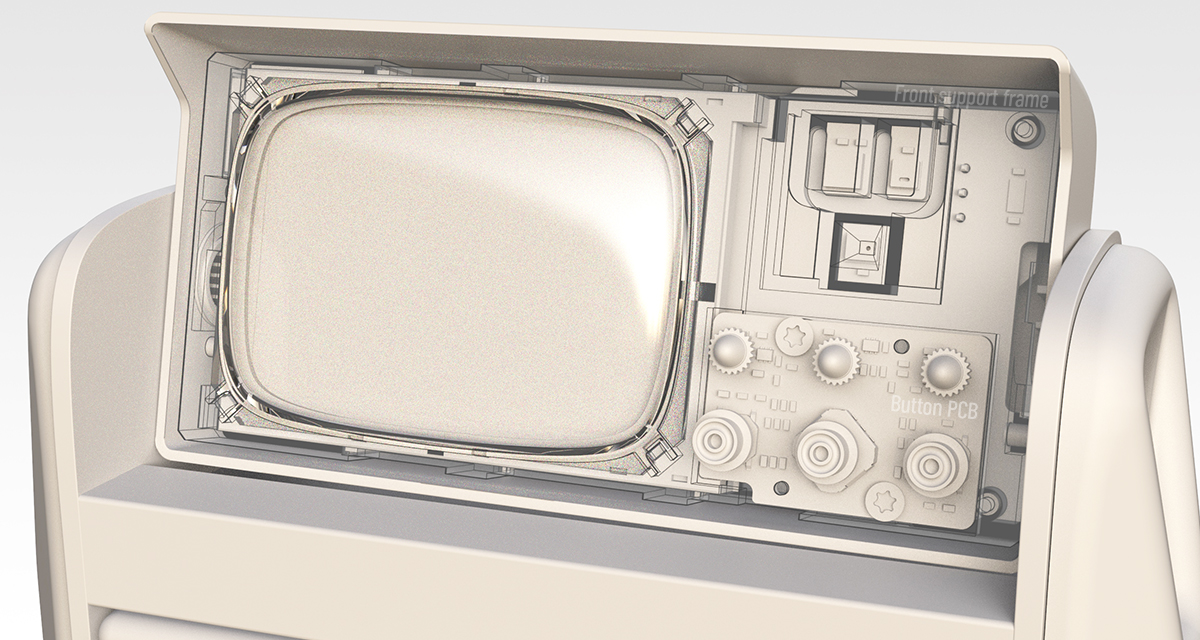
The aluminium bezel (not shown) attaches to a frame located over the button/LED PCB and several of the sensors
How do you recreate elements that were missing from the prop when you studied it, but are clearly part of the canon?
The middle compartment of the hero prop, along with all the original details, was long-removed. However, I could see the dried glue and the edges of the remnants where certain parts of the middle section had been held. Combining this with the scan data and original photos, I was able to more precisely calculate the sizing and geometry of those missing middle features. This allowed me to recreate those elements that were absent from the hero tricorder.
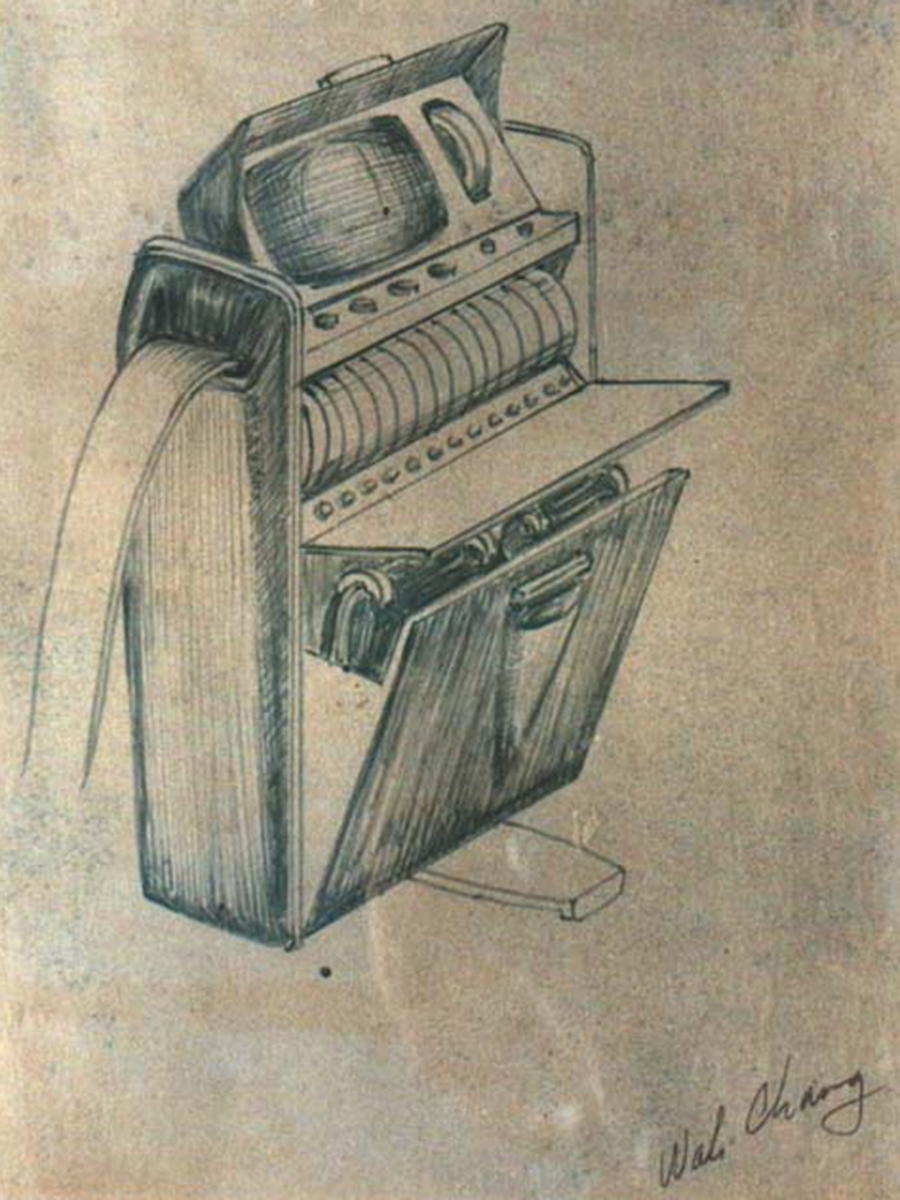
Wah Chang’s original concept sketch
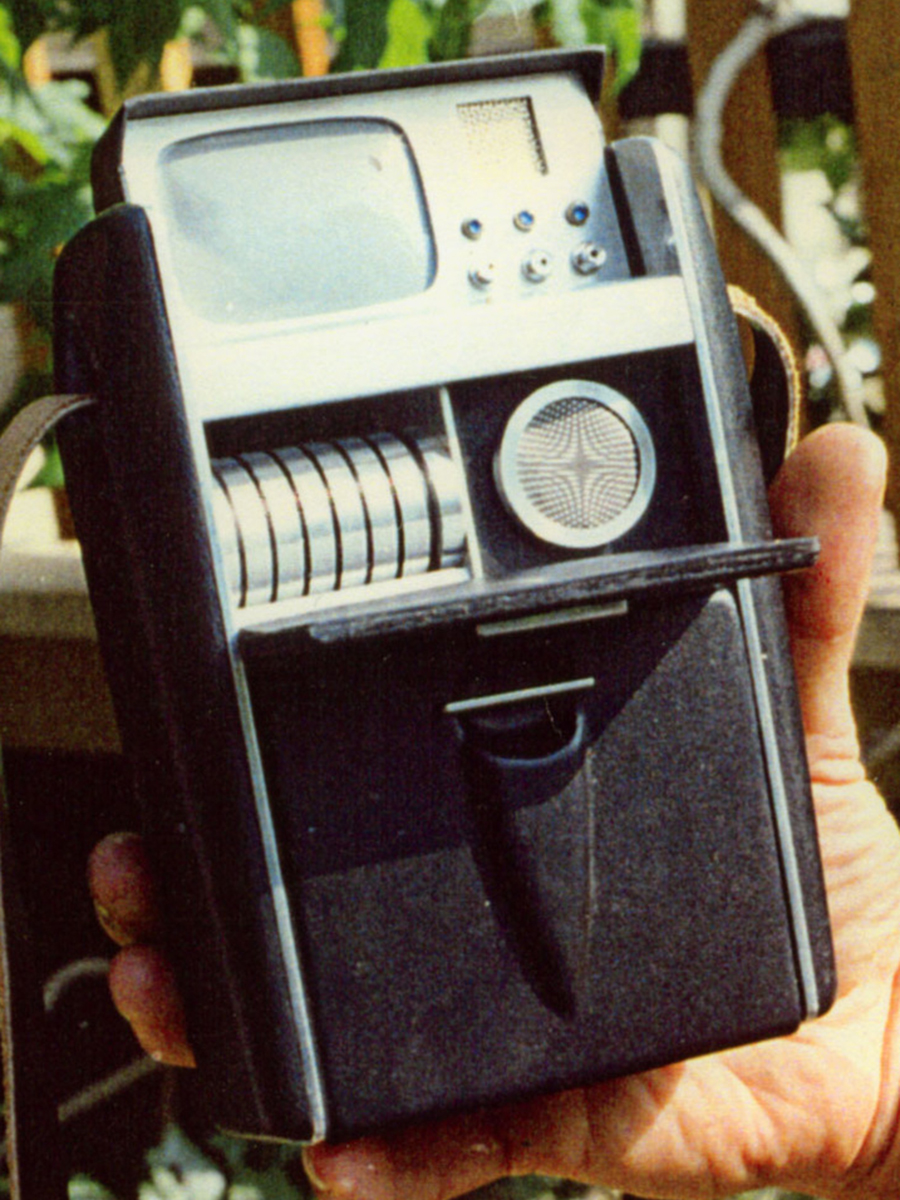
Season 1 tricorder A
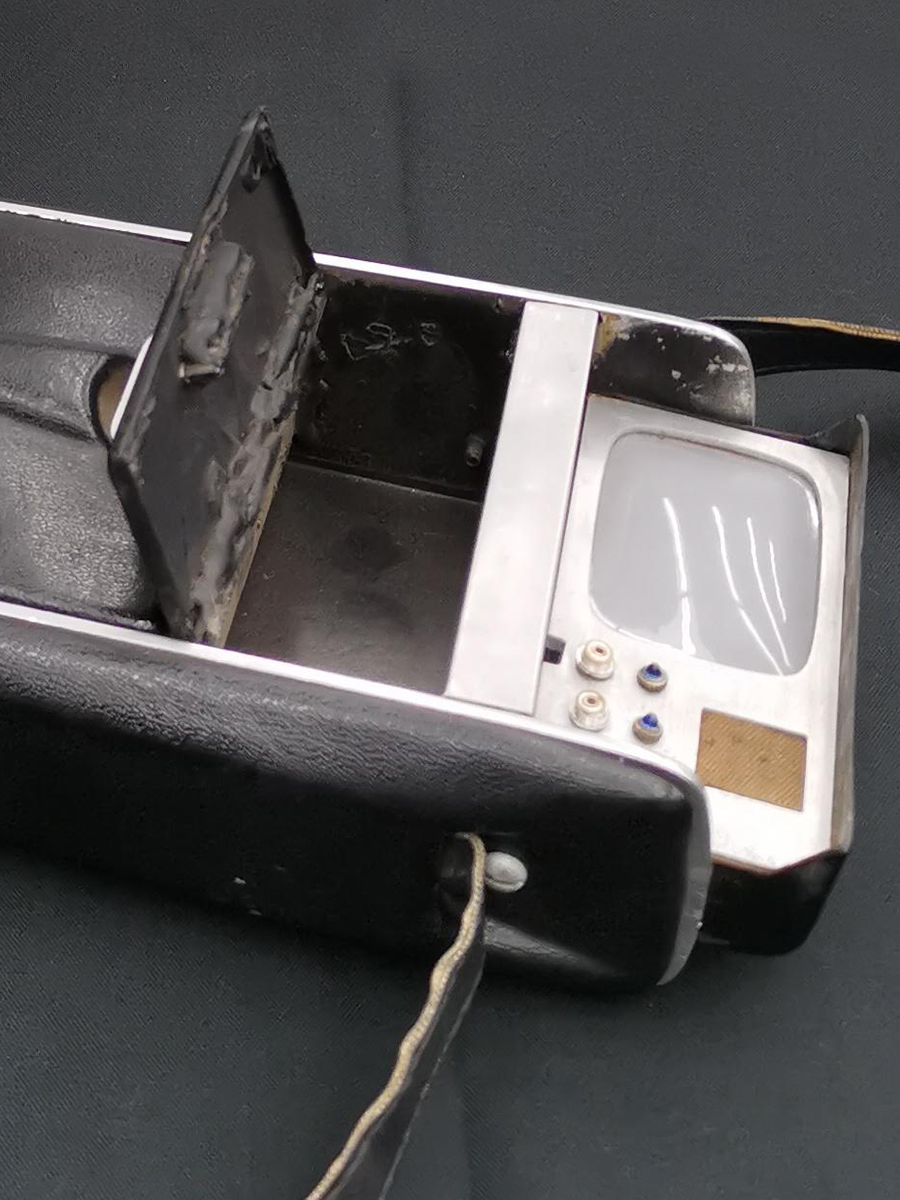
Tricorder Wah A-B today
What was the most rewarding win?
Designing a working rack of removable data discs that would fit within the original geometry that Wah Chang conceptualised. We will discuss this aspect of the design in more detail in a future post.
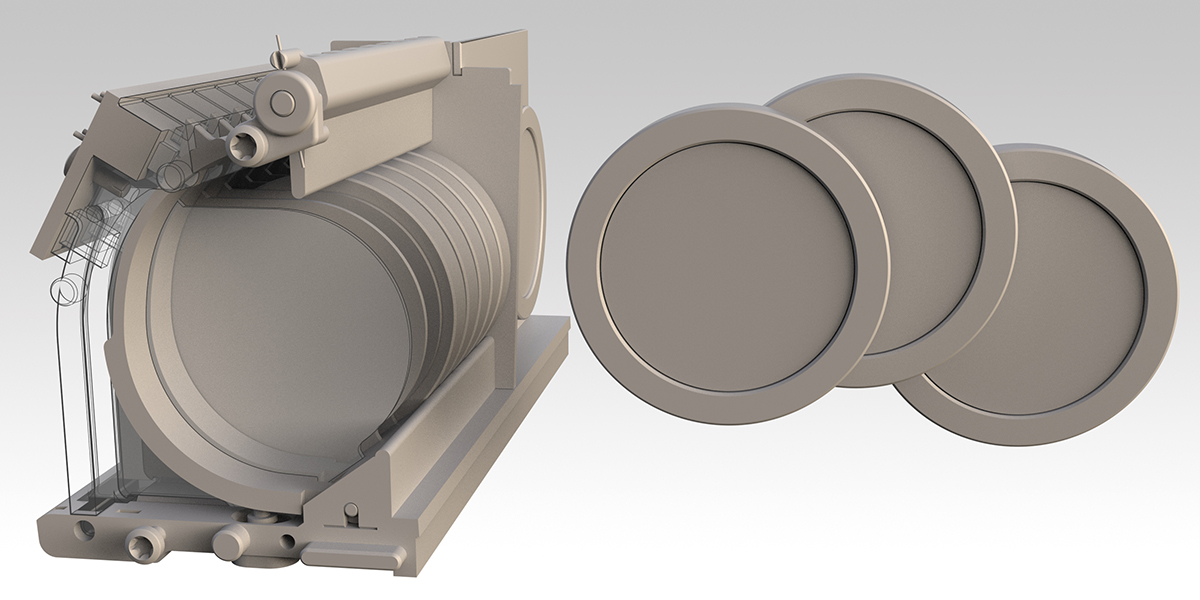
Data disc ejector mechanism incorporates data disc detection switches
Is there a part of the prop that you felt you had to modify and why?
Whilst studying the Hero prop main control panel, I could see that it had a woven brass mesh fitted. However, prior to it being deconstructed and rebuilt, it originally had the diamond-patterned radio grille, similar to our previous Communicator replica. In the hero props, the Wah Chang’s grille material was taken from a Coronet-Windsor transistor radio, which was similar to many other transistor radio grilles in the 1960s (as explained in remarkable detail on the HeroComm website). We investigated the woven mesh option and considered replicating this, but we felt it just wasn’t as iconic as the diamond grille which had originally been fitted to the tricorder props. In the two original tricorder props made by Wah Chang, one had the grille fitted with the diamonds running in a horizontal orientation, whilst the other had the diamonds running vertically (in the same way as for the Communicator grille). The control plate that is now in Greg Jein’s “Wah A-B” tricorder was the one which had the horizontal diamond pattern, so that’s the orientation we’ve decided to use for our replica.
Andrew’s answers and the accompanying pictures provide a tiny glimpse into the enormous effort that we have put into this project to make the tricorder look and feel right. As we worked through the tricorder CAD we came to fully appreciate just how good the design of the original prop was. Studying the shape, features, and functions of the tricorder in such detail, it also rapidly became clear what a visionary Wah Chang was. He foresaw a time when small but powerful computers (and communicating devices) would be carried around and what in general terms they would look like. As the functional CAD took shape, we fell in love with the tricorder and came to admire it as perhaps one of the most prescient pieces of fantasy technology in the history of film and TV.

Coming next time
3D printing – the CAD comes alive
Fans who register with us will be the first to read our news and the progress of this exciting Tricorder development and, later, where and when to purchase it. You can catch up with the story so far here on this blog, but if you haven’t already done so, why not register your interest in the Tricorder – you’ll then receive a personalised registration certificate and early access to these updates (before we publish them on our website).


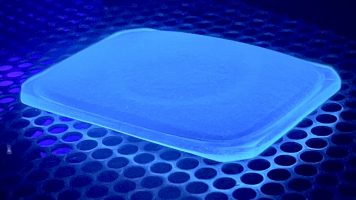
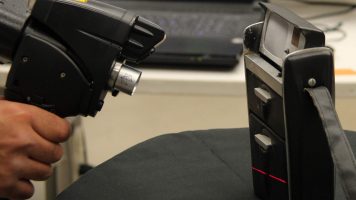
This is a tremendous writeup. Thank you for sharing this. As a man who grew up watching Star Trek and a proud owner of your two previous amazing offerings in this line I am very excited to see that you will be bringing this to market. I am also exceptionally thankful that you have put the same level of effort into this offering as the other two. Thank you!
It’s fascinating to read all the updates! All of the engineering going into this project will surely be worth it. All of your products that I have purchased are extremely well done! Can’t wait to read out the next installment.
All the Best!
Love the new images at the top guys! Keep the great info coming.
Can’t wait for the release
I’m really enjoying the images and explanations of how you all have designed this awesome replica for us! And I’m really getting some cool clues from the pictures as to what functions are coming up. I can’t wait to see more images like the first wire-frame CAD you published here. It really helps identify the cool engineering you are going through – and raises some intriguing questions.
For instance, why such a large step motor compared to the one on your Communicator? Just a ‘price vs size’ issue? Or something more? And – potentially related – why is the design of the data discs *strikingly* similar to the design of the moire disc (with the outer ring and a recessed center)?
All of this is so tantalizing! Just take my money!
I mean it! Let me just pay you *now* and get it over with! No need to wait! 🙂
Well, lots more information to come, but in short, you’re right, the communicator could only fit a tiny stepper motor, which presented some significant challenges in order to drive it smoothly and was very costly and actually very difficult to get hold of. Where there is room, and in the tricorder we do have a bit more room, although it has to squeeze in next to the speaker, it is much easier for us to use a larger, more cost-effective, and more robust stepper motor solution.
The design of the data discs does relate emotionally to the design of the moiré bezel, but more importantly, we saw the disc obviously as the embodiment of an advanced storage medium, and as there is no canon describing what the discs look like we were able to consider something that we knew would feel nicely tactile in the hand and have the apparent function intended … that’s a function we will talk about in a subsequent post, so no spoilers here!
I am really thrilled that you are enjoying our chance at telling the story of this incredible project. The tricorder is by far the most advanced replica we have made and we can’t wait to start manufacturing them and getting them out into the universe where they belong… in the hands of fans like yourself.
Thanks for the info and the teaser, Chris! You’re really keeping my mouth watering. Can’t wait for the ‘more to come’! 🙂
It’s looking fantastic. Looking forward to purchasing some when they are ready.
Don’t know if this has even been discussed, and I’m sorry if it was and I missed it, but it needs to come with both science and medical accessories, so the user can play either configuration. My classmates called me Mr. Spock when I was in high school, so you know which configuration I’d use most, but it would still be cool to whip out the medical tricorder on occasion. I love your products and they’re very much worth the price, but I can’t buy two tricorders.
BTW: The antenna cover grill on my Communicator feels like it might be a little loose. What can I do about that?
We’ll discuss the functions in a later post, but in the meantime, if you need help with your communicator, please contact us at support@thewandcompany.com and we will do our best to help you.
To coin a phrase, fascinating. The research, design, and engineering work is extensive, to say the least. Regarding the power source, the Phaser and the Communicator are rechargeable. Will the Tricorder also follow the same recharge paradigm as the Phaser (cord-based charging) or possibly use a replaceable power pack (which could also be rechargeable)? I imagine the power requirements for the Tricorder are going to be more extensive than the Phaser and Communicator. Speaking of which, I know the battery in the Communicator can be replaced, but not so sure about the Phaser. Can the rechargeable batteries ever be replaced in the Phaser P1 (assuming I could get it open without destroying it)?
I love my Master Replica props but yours have taken fit, function, and fun to a whole new level. Appreciate the peek behind the curtain. I’m definitely in for two.
Thank you for your kind words… this is only the beginning of the story. We will be discussing the power supply later with a bit more detail, but you’re right, we’re gonna need a bigger battery! Expect to see a pretty standard and replaceable rechargeable battery similar to those used as part of larger battery blocks in laptops, power tools and e-bikes for example. In answer to your question about the Phaser P1, the battery itself is connected to the P1’s PCB with flying leads and actually is a relatively standard small prismatic rechargeable lithium polymer cell. The issue is that due to the complexity of the build and a bit of poor future-proofing on our part (and perhaps a little bit of optimistically following the battery supplier’s lifetime claims), the P1 case was not designed to come apart easily. As far as I know, it has been done and batteries have been replaced. When we designed the Communicator, we did take these issues into account and although there was no way we could fit absolutely standard batteries inside the Comm, we dd make it so that it would be possible to change the battery without changing the laws of physics, to coin another phrase lol. It’s good you’re enjoying the peek because there’s plenty more to come.
The larger battery in the Tricorder will give it some heft.If properly placed, this will also help keep it stable when resting on the bottom.
I know the phrase is “Shut up and take my money!” but DON’T shut up, this is (to coin a word) FASCINATING.
So glad you are enjoying it. From our side, it is really very nice to be able to explain a little bit about what is involved in the development of one of our products. Thank you for your support and encouragement.
Thanks for update!
Great write up. I appreciate the info finally coming out.
I am concerned that I am not receiving these updates via email. I have registered but have not received anything from you, aside from the initial confirmation.
I don’t want to miss my shot at this collectible. I suspect there’s going to be a run on it.
Hi David, I will email you directly with some information about your emails. It looks to me that the last two have been delivered but not read so maybe you should check in your spam or junk folder and see if they are there. I will email you with the exact dates and times (BST) that we sent them out and hopefully, you can track them down manually because sometimes the search function does not cover those folders.
Just got Update #4 in the mail. WOW. I never realized how small the Tricorder actually is. Looking at it in the photo with the Phaser and Communicator really brings home its true scale. And that just increases my admiration for all the engineering you have had to do to squeeze everything into the real dimensions of the Tricorder.
I am in awe. Congratulations!